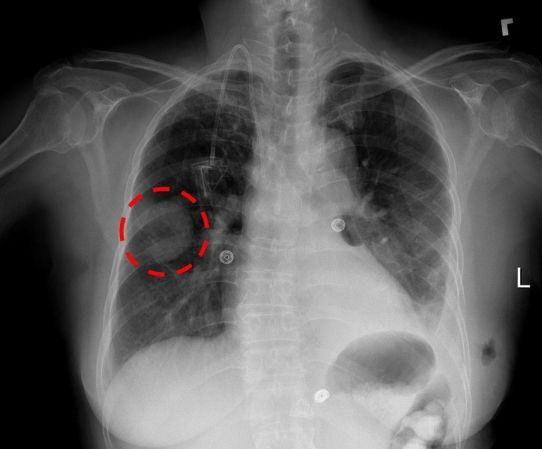Artificial intelligence is subverting almost all imaginable fields such as transportation, finance, education, and so on. Recently, Aladoc's founder and CEO Elad Walach published an article saying that one of the key areas that artificial intelligence will target is health care, which will change areas such as personalized medicine, clinical decision making and even medical insurance.
Aidoc is a smart radio company that uses artificial intelligence to check for abnormalities in medical images and to streamline workflows.
Elad Walach believes that perhaps the fastest changing field of artificial intelligence is radiation. Artificial intelligence will be the key to the interpretation of important medical images. These medical images reflect the internal conditions of our bodies, such as CT scans, MR and X-ray images, and help doctors do what they are best at: diagnosis.
Why is the radiation field the first field of medicine that has been completely reinvented by artificial intelligence? What makes the field of medical imaging a magical power for deep learning?
1. Radiology is visible. Medical scanning is of course visible, and artificial intelligence is particularly powerful in analyzing visual images - at least in part thanks to breakthroughs in artificial intelligence technology in security and social media services that can identify our faces and find them from the crowd we.
The field of radiation is highly dependent on the interpretation of visual data, which makes it more suitable for deep learning than other medical fields. This means that radiologists can immediately benefit from the use of artificial intelligence techniques, while psychiatrists or gastroenterologists cannot.
2. The radiology department is urgently needed by the industry. The number of medical images (CT and MR) continued to increase dramatically - they accounted for 7.9% and 8.9% of all tests in 2016, respectively. However, the number of radiologists has entered a stable phase while more scans have taken place. Moreover, as technology advances, the resolution and number of images per scan increase exponentially. Therefore, the number of details that need to be considered increases accordingly. This creates a huge technological need to break through the dangerous bottlenecks caused by increasing workloads – and, as we know, needs are the mother of invention, deep learning can help evaluate CT and MRI scan results, quickly Find out the areas that radiologists should focus on so that they can carry out further inspections, while also allowing quicker assessment of emergency scans — thus improving the patient's prognosis.
3. The radiology department is technology-centered. In addition to its visual nature, the radiology department is already an area that focuses on technology. Radiologists rely on a large amount of advanced technology every day — every inspection involves advanced software systems, diagnostic monitors, and workstations. Because of the technology-driven nature of their daily work, radiologists are considered “early adoptersâ€. . This is why they are more likely to use other technologies supported by artificial intelligence, and early examples have shown that radiologists are more adept at accepting innovation than many other colleagues: The radiology department of the 1980s accepted the shift from film to digital images.
4. There is a large amount of data available. All deep learning requires a lot of data to be truly effective. For radiology, these data exist in the form of endless images accumulated for various symptoms over the past few decades.
Of course, the mining of data is also challenging. The challenge is how artificial intelligence algorithms obtain these images. Recently, some medical institutions have publicly shared their anonymous data, which has generated a boom in this area. For example, the recently released X-ray dataset of the National Institutes of Health, which contains more than 100,000 data sets. An image with a comment (as shown below).

Why is radiology more easily subverted by artificial intelligence?
5. Cloud computing will have an impact on artificial intelligence. The increase in cloud storage capacity and computing speed has had a major impact on artificial intelligence in all areas, and the medical field, especially in the field of radiology, is no exception.
The previously mentioned machine learning ability to access and interpret large amounts of data can improve accuracy and speed. This ability is largely due to the continuous development of cloud computing, providing more affordable services, and these advances have made cloud computing a reality. Become an important driving force for simple and cost-effective artificial intelligence solutions.
6. This is already happening. Artificial intelligence in the field of radiation already exists, and it will obviously continue to exist. More and more startups and large companies are building artificial intelligence imaging capabilities and are beginning to integrate them into their products. These companies include IBM Watson, Change Healthcare and others.
In fact, the world’s leading radiology conference, the North American Radiological Society (RSNA), now has a section dedicated to machine learning companies. The breakthrough artificial intelligence solutions being developed by these companies have already been implemented in medical institutions and have changed radiation. The appearance of the field in 2018 and beyond.
In 2018, we are expected to see more medical fields with revolutionary changes in tailor-made deep learning technologies, including pathology and genetics. In the coming year, the field of radiation will not be the only one that will benefit from the miracle of artificial intelligence, but it is certainly one of the first areas of benefit.
Energy Storage Battery,Battery Energy,Battery Energy Storage System,Storage Battery
Power X (Qingdao) Energy Technology Co., Ltd. , https://www.solarpowerxx.com
